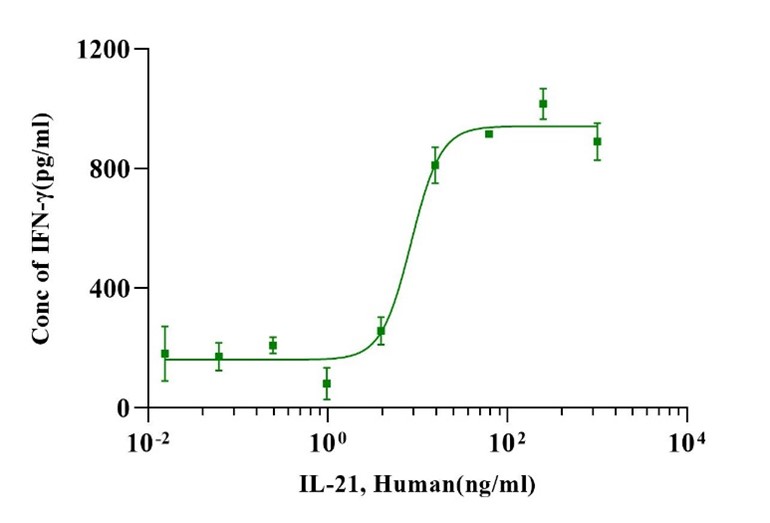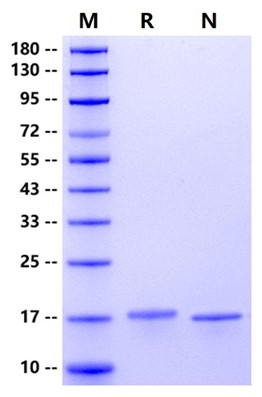



 下载产品说明书
下载产品说明书 用小程序,查商品更便捷
用小程序,查商品更便捷



 收藏
收藏
 对比
对比 咨询
咨询
Gln32-Ser162












IL-21 (another common gamma chain cytokine) that is produced primarily by CD4+ T cells of the TFH lineage has a range of functions, including the promotion of apoptosis, proliferation, and gain of effector function in B cells, T cells, NK cells, and DC. After BMT, TFH cells drive marginal zone B cell expansion and aberrant B cell development. These B cells produce alloantibodies in a Bruton's tyrosine kinase (BTK)–dependent manner, and these antibodies are now established as making a critical contribution to cGVHD. IL-21 also induces IL-10 production and can thus have both regulatory and proinflammatory roles, depending on the other cytokines present. IL-21R deficient animals and specific blocking antibodies have been used to assess the role of IL-21 in GVHD, confirming it has a pathogenic role in the GI tract (with receptor-deficient animals experiencing less GI-specific GVHD). The use of IL-21 blocking mAb used in a xenogeneic mouse model (with NOD/SCID/γc−/- recipients) has demonstrated a decrease in CD8+ T cells and an increased proportion of Tregs. This group also demonstrated local protein expression of IL-21 in the GIT and skin, but not serum. Neutralization of IL-21 represents a promising therapeutic strategy to prevent and treat cGVHD that now requires investigation in a clinical study.


·12 months from date of receipt, lyophilized powder stored at -20 to -80℃.
·3 months, -20 to -80℃ under sterile conditions after reconstitution.
·1 week, 2 to 8℃ under sterile conditions after reconstitution.
·Please avoid repeated freeze-thaw cycles.
Blood. 2007 May 15;109(10):4135-42.
Nat Rev Drug Discov. 2014 May;13(5):379-95.

参考图片
Measured by its ability to enhance IFN-γ secretion in NK-92 human natural killer lymphoma cells. The EC50 for this effect is <10 ng/ml.
1μg(R: reducing conditions, N: non-reducing conditions).






 危险品化学品经营许可证(不带存储) 许可证编号:沪(杨)应急管危经许[2022]202944(QY)
危险品化学品经营许可证(不带存储) 许可证编号:沪(杨)应急管危经许[2022]202944(QY)  营业执照(三证合一)
营业执照(三证合一)